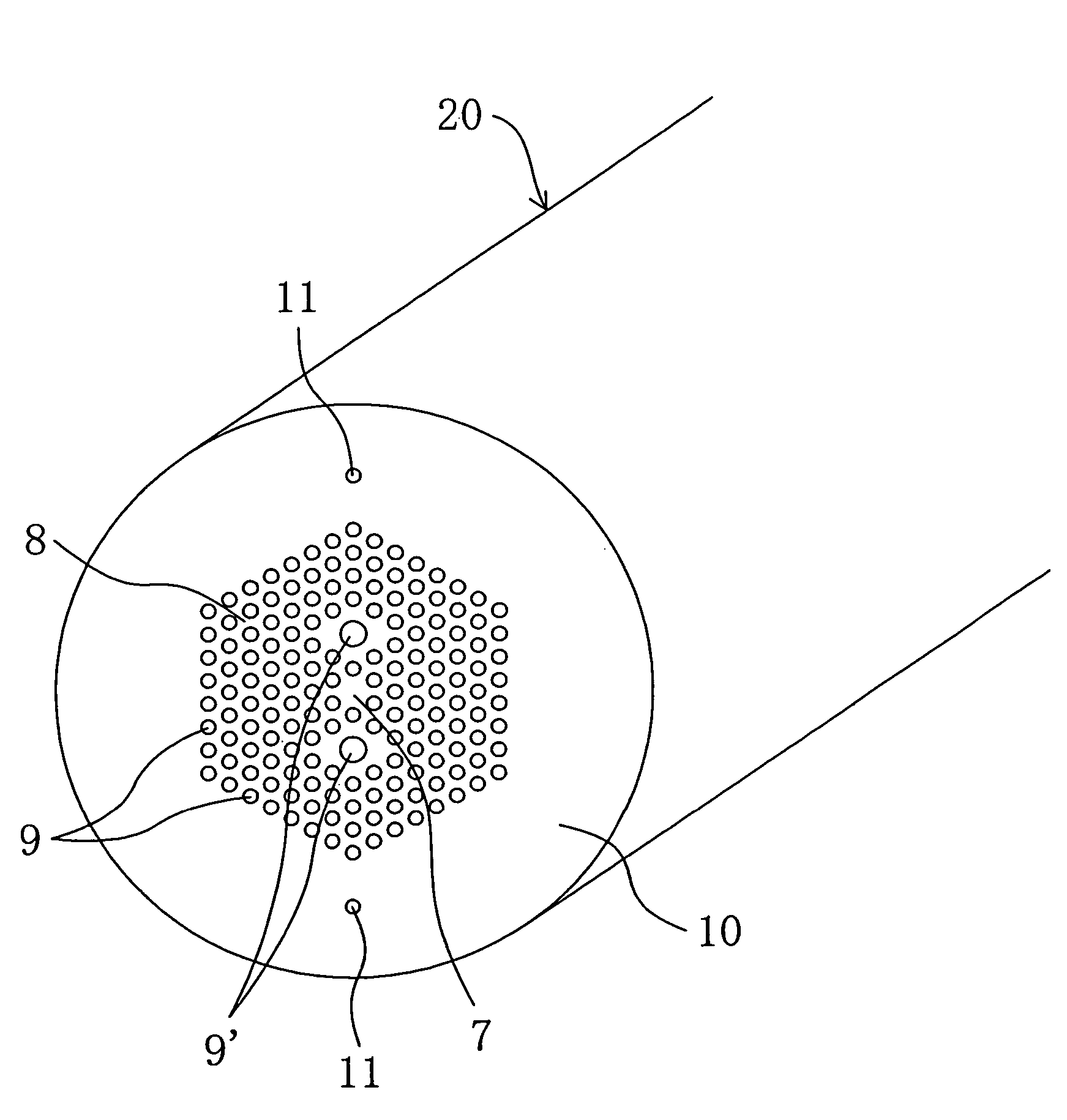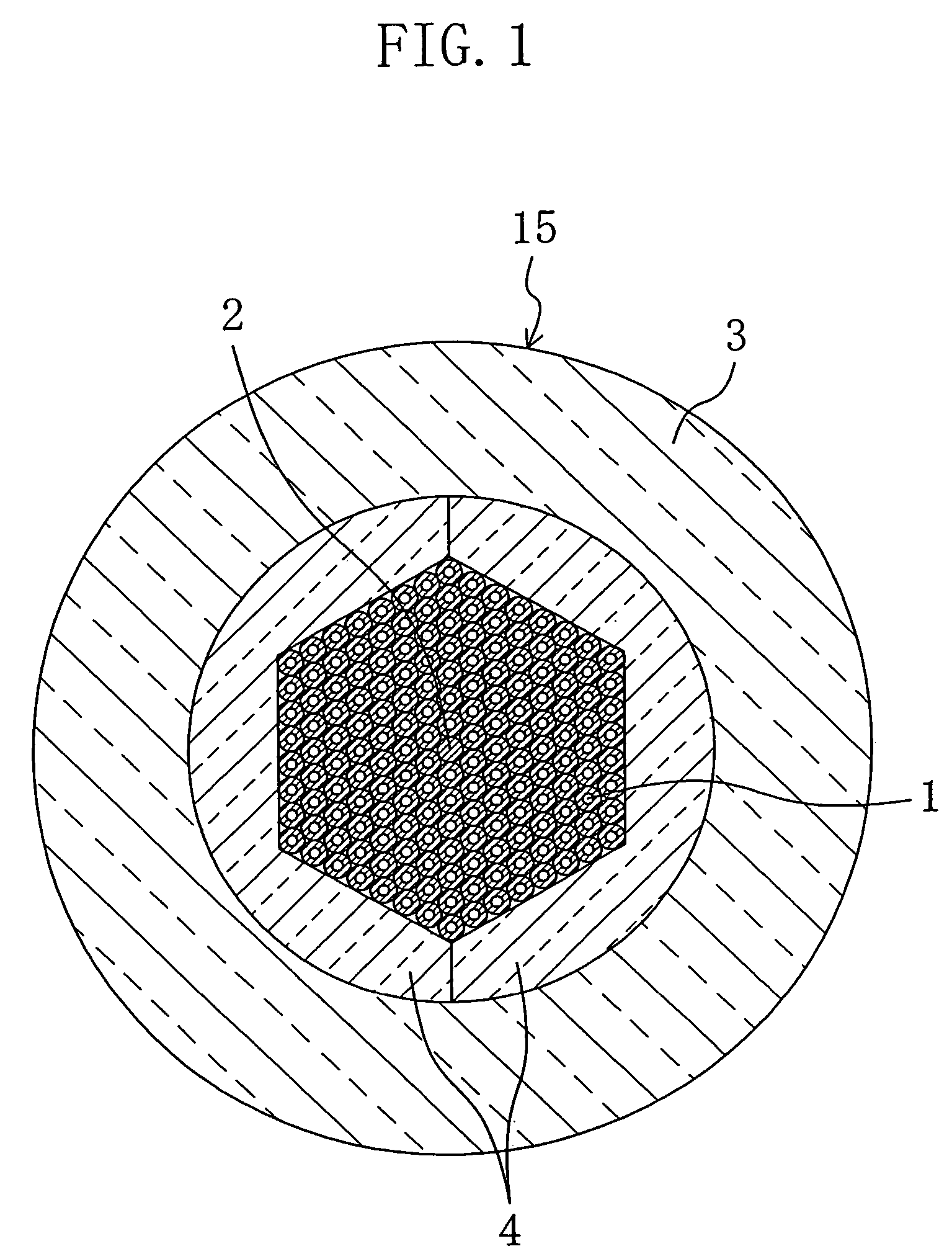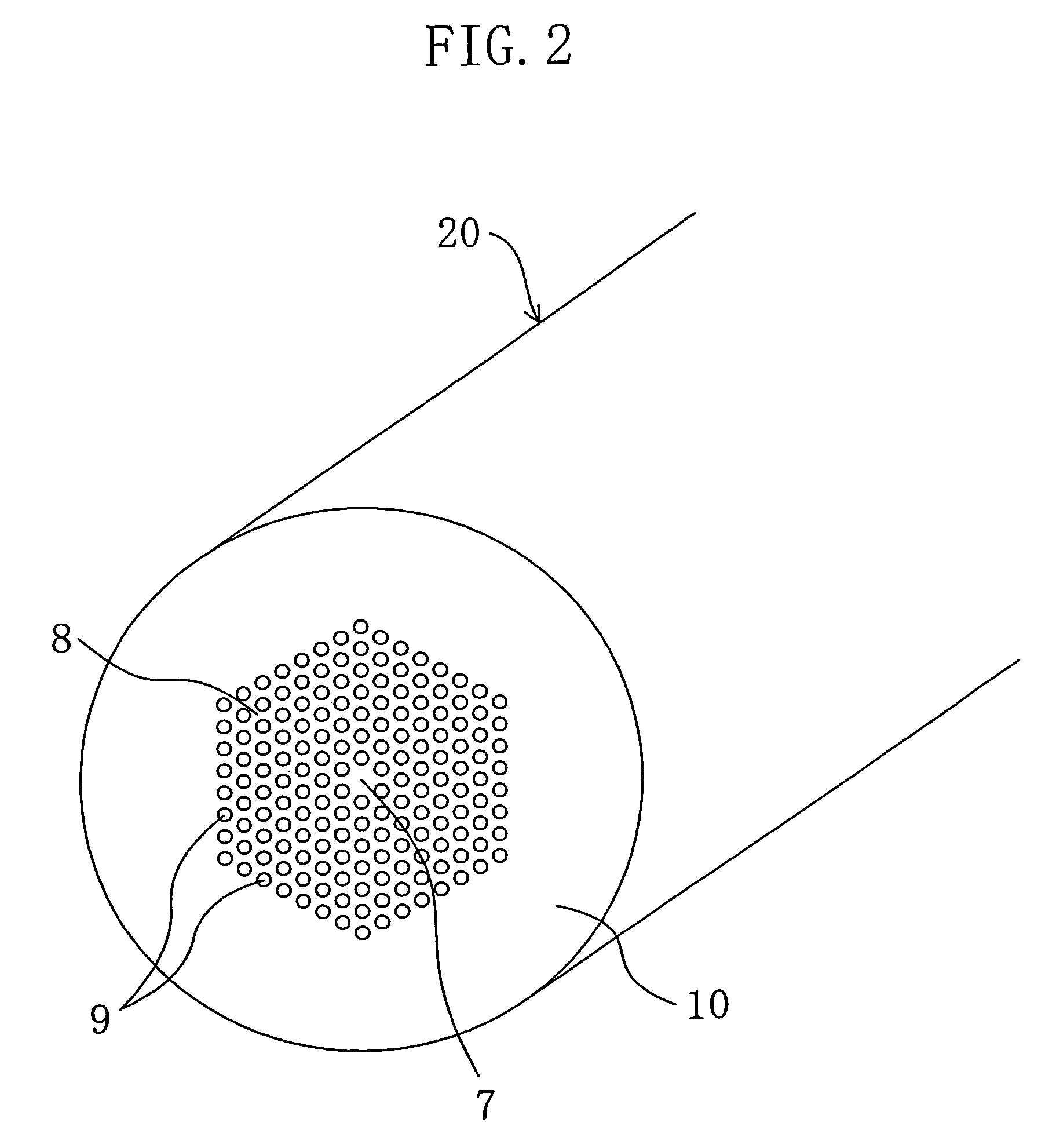Method of manufacturing photonic crystal fiber using structure-indicating rods or capillaries
a technology of structure-indicating rods and photonic crystal fibers, which is applied in the direction of manufacturing tools, optical fibers with polarisation, instruments, etc., can solve the problems of difficult to grind a columnar rod into a cylinder with great precision, and the technique is not suitable for fabricating a long pcf, so as to achieve easy recognition
- Summary
- Abstract
- Description
- Claims
- Application Information
AI Technical Summary
Benefits of technology
Problems solved by technology
Method used
Image
Examples
embodiment 1
[0034]Hereinafter, a step-by-step explanation is give of the method for manufacturing a PCF according to Embodiment 1.
[Preparation Step]
[0035]First, prepared are: a plurality of cylindrical quartz capillaries 1; a columnar core rod 2 which is made of quartz and has the same outer diameter and length as those of the capillaries 1; a large-diameter cylindrical support tube 3 which is made of quartz and has the same length as that of the capillaries 1 and a pair of spacer parts 4 made of quartz and has the same length as that of the support tube 3.
[0036]The spacer parts 4 are half parts of a cylindrical tube which are cut along the circumference direction. The inner wall surface of each of the spacer parts 4 is shaped to have a half of a regular hexagonal cross-sectional shape. In this embodiment, two spacer parts 4 are paired. The cross-sectional shape of the inner wall surface of the spacer 4 is so designed that among the capillaries 1 which are closest packed in the spacer 4 to form...
embodiment 2
[0052]Hereinafter, a step-by-step explanation is give of the method for manufacturing a PCF according to Embodiment 2.
[Preparation Step]
[0053]First, prepared are: a plurality of cylindrical, small-diameter capillaries 1 made of quartz; two cylindrical, quartz-made structure-indicating capillaries 6 of a small diameter which indicates the inner structure of the fiber; two cylindrical, quartz-made polarization maintaining capillaries 5 of a large diameter; a single columnar core rod 2 which is made of quartz and has the same diameter and length as those of the capillaries 1; a cylindrical, quartz-made support tube 3 which is shorter than the capillaries 1 and the core rod 2; and a pair of spacer parts 4 which are made of quartz and have the same length as that of the support tube 3.
[0054]The spacer parts 4 are halves of a cylindrical tube cut along the circumference direction and each of the spacer parts 4 has an inner wall surface which forms a half of a regular hexagonal cross-secti...
PUM
| Property | Measurement | Unit |
|---|---|---|
| length | aaaaa | aaaaa |
| degree of freedom | aaaaa | aaaaa |
| diameter | aaaaa | aaaaa |
Abstract
Description
Claims
Application Information
 Login to View More
Login to View More - R&D
- Intellectual Property
- Life Sciences
- Materials
- Tech Scout
- Unparalleled Data Quality
- Higher Quality Content
- 60% Fewer Hallucinations
Browse by: Latest US Patents, China's latest patents, Technical Efficacy Thesaurus, Application Domain, Technology Topic, Popular Technical Reports.
© 2025 PatSnap. All rights reserved.Legal|Privacy policy|Modern Slavery Act Transparency Statement|Sitemap|About US| Contact US: help@patsnap.com



